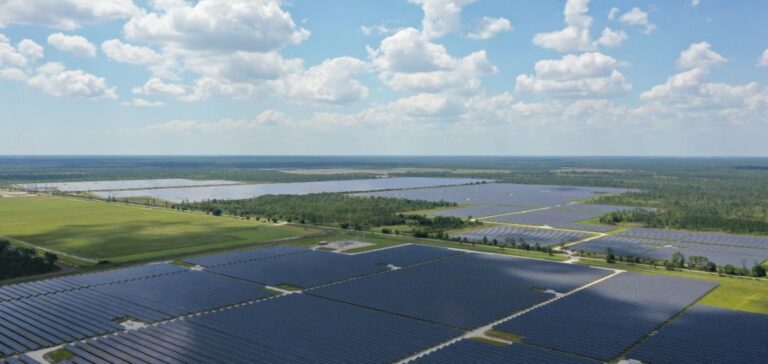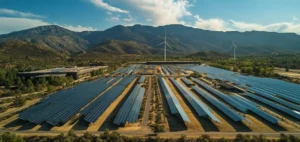The American solar panel manufacturer First Solar has raised its annual revenue forecast, assessing that recent tariff policies in the United States will support higher product prices. This outlook comes as the solar sector has faced moderate demand and high interest rates for several months.
Increase in import tariffs on foreign panels
The American regulatory context has recently evolved with the announcement of additional duties on imported solar panels. This measure is part of a series of federal initiatives, including the gradual phase-out of solar and wind tax credits scheduled by the “One Big, Beautiful Bill Act” (OBBBA) by 2028. First Solar considers that these political and commercial developments have strengthened its competitive position within the industry, according to its Chief Executive Officer Mark Widmar.
The manufacturer stated that the tariff environment could support the profitability of local players, while limiting exposure to competition from Asia. In early July, several American manufacturers, including First Solar, requested the United States Department of Commerce to impose tariffs on solar panels from Indonesia, India and Laos, aiming to protect their investments and maintain competitiveness against Chinese producers.
Revenue forecasts revised upwards
First Solar now expects revenue between $4.9bn and $5.7bn for the current year, compared with an initial range of $4.5bn to $5.5bn. Analysts on average forecast $5.07bn in revenue for 2025, according to LSEG data.
The company also observes growing demand for electricity from renewable sources, driven by the accelerated adoption of such solutions by businesses and public administrations. In this context, the evolution of American trade and tax policies may continue to shape the dynamics of the solar market, as players seek to secure their position in the domestic market.
First Solar shares recorded a gain of over 4% at the close of the session following the announcement of the revised outlook.






















